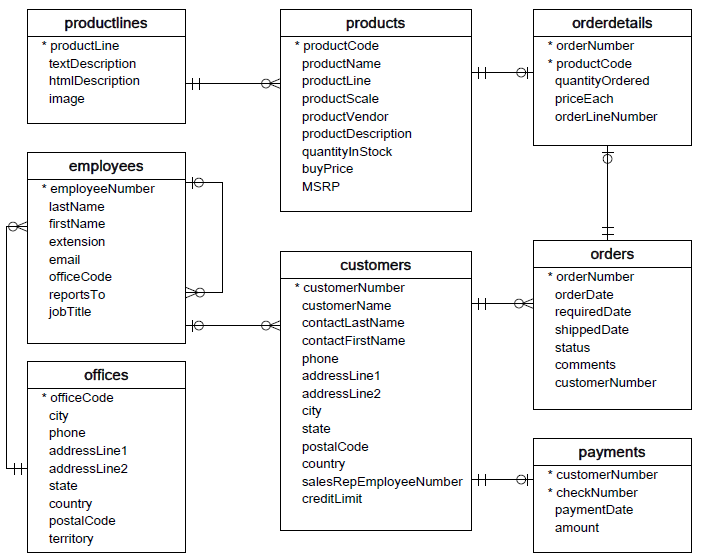In this lab, you'll practice your knowledge of one-to-many and many-to-many relationships!
You will be able to:
- Explain one-to-many and many-to-many joins as well as implications for the size of query results
- Query data using one-to-many and many-to-many joins
Include the relevant imports, then connect to the database located at data.sqlite.
# Your code hereSelect all of the employees including their first name and last name along with the city and state of the office that they work out of (if they have one). Include all employees and order them by their first name, then their last name.
# Your code hereSelect all of the customer contacts (first and last names) along with details for each of the customers' order numbers, order dates, and statuses.
# Your code hereSelect all of the customer contacts (first and last names) along with details for each of the customers' payment amounts and date of payment. Sort these results in descending order by the payment amount.
# Your code hereSelect all of the customer contacts (first and last names) along with the product names, quantities, and date ordered for each of the customers and each of their orders. Sort these in descending order by the order date.
Note: This will require joining 4 tables! This can be tricky! Give it a shot, and if you're still stuck, turn to the next section where you'll see how to write subqueries that can make complex queries such as this much simpler!
# Your code hereIn this lab, you practiced your knowledge of one-to-many and many-to-many relationships!
